Govt eyes new transport plan for car-dependent northern suburbs
The state government has begun work on a new transport planning study for Adelaide’s northern suburbs, amid calls for more public transport investment in the car-dependent region.

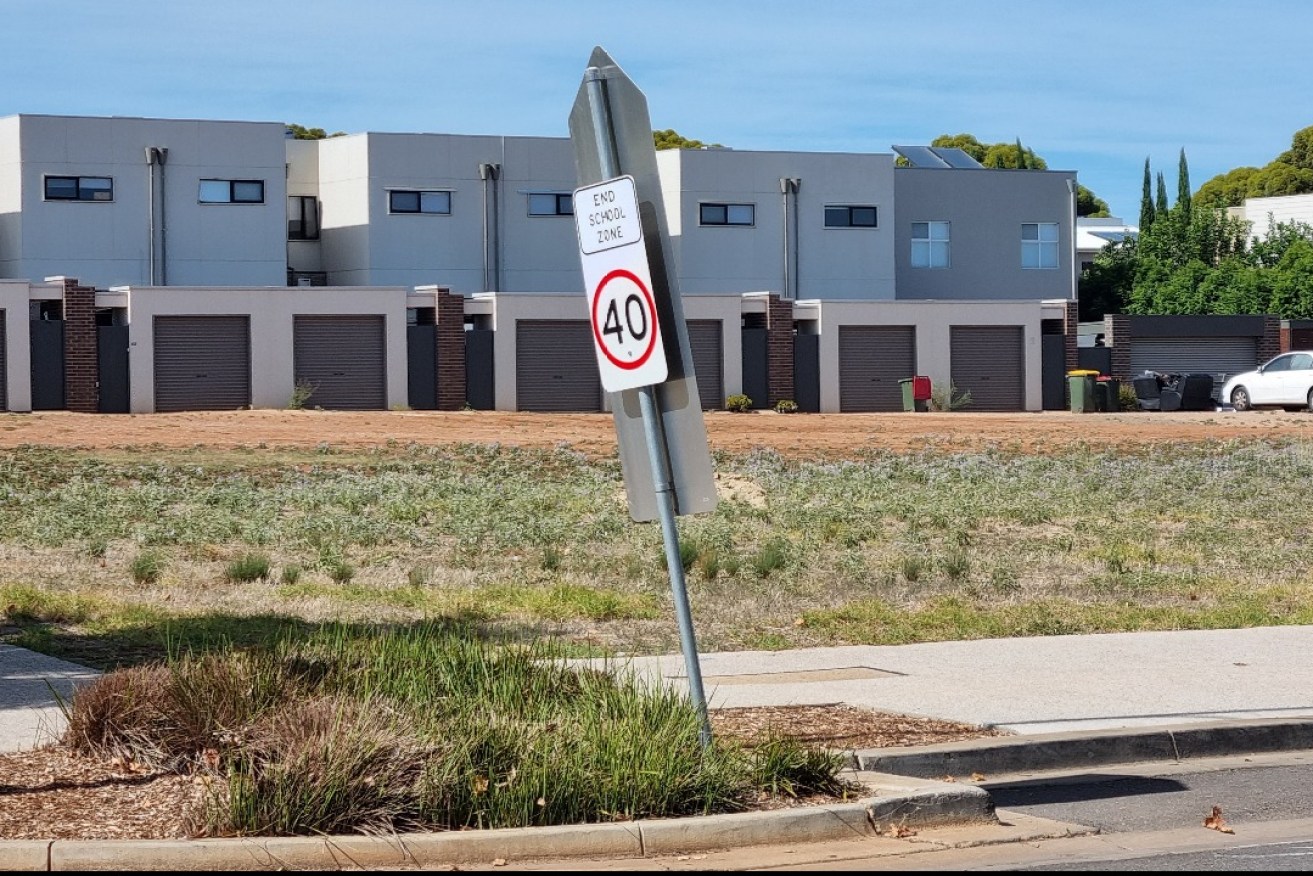
A speed limit sign signalling the end of a school zone in Blakeview. Transport investment in the Adelaide's northern suburbs is set to go under the microscope. Photo: Thomas Kelsall/InDaily
The Adelaide North Transport Study will examine issues with transport in the northern suburbs and inform future transport investment, Transport Minister Tom Koutsantonis announced today.
The Department of Infrastructure and Transport study will cover Adelaide’s inner northern suburbs around Modbury, Mawson Lakes, Salisbury and Golden Grove as well as the outer northern suburbs of Virginia, Angle Vale, Two Wells, Buckland Park and Roseworthy.
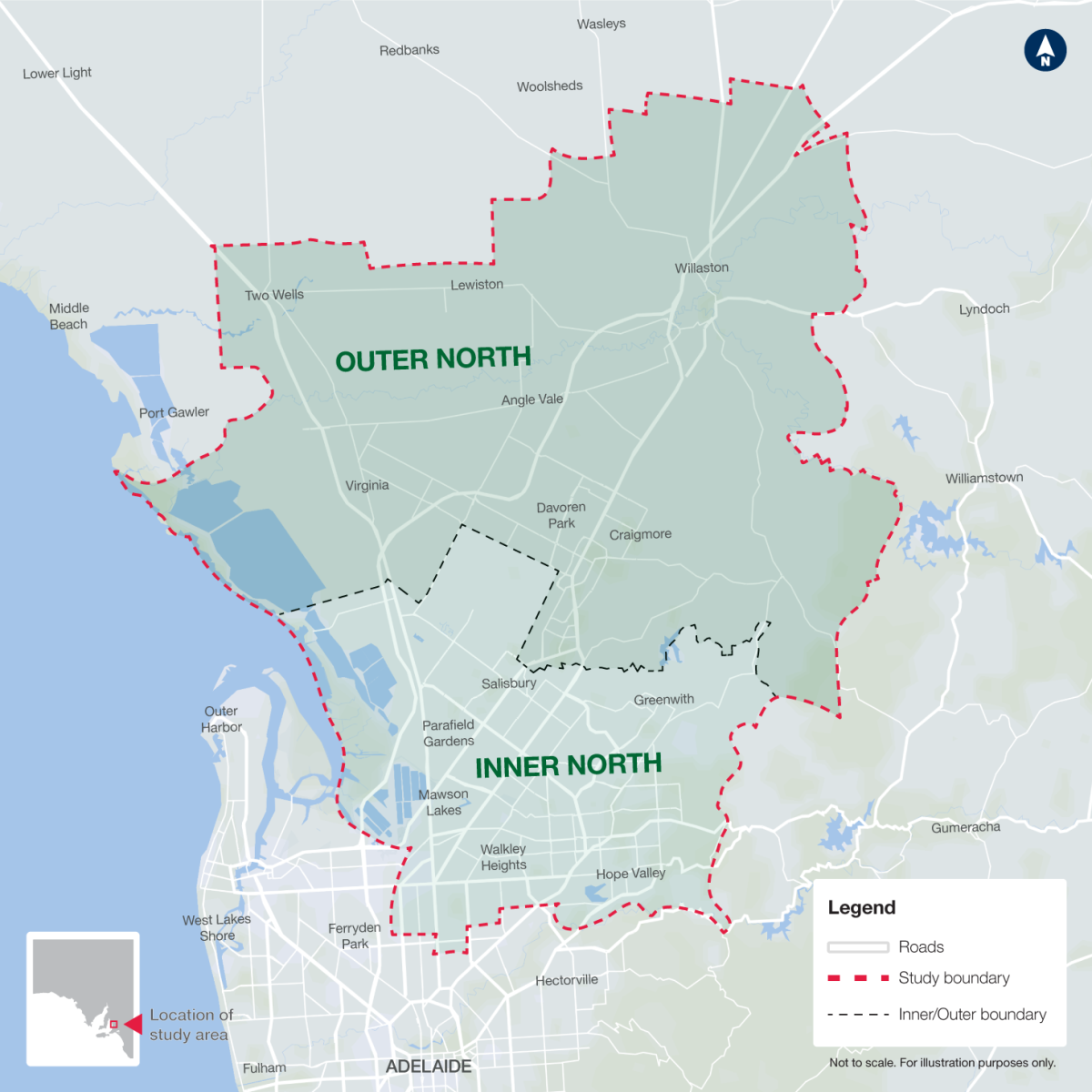
A map of study area for the northern Adelaide transport study. Image: DIT/supplied
The 12-month study comes at a critical time for the northern suburbs’ development, with the state government expecting the region to shoulder much of Adelaide’s housing growth over the next 30 years.
The majority of new homes to be built under the Malinauskas government’s “single largest release of residential land in the state’s history” are in Dry Creek (10,000 homes), Concordia (10,000 homes) and Golden Grove (500 homes).
That’s not including Walker Corporation’s major housing estate at Riverlea in the northwest, which is anticipated to deliver an additional 12,000 homes and 40,000 residents.
The northern suburbs have already experienced significant population growth. The outer north – comprising the Playford, Gawler, Light, Adelaide Plains and Barossa council areas – added 13,000 people between 2016 and 2021, according to census data.
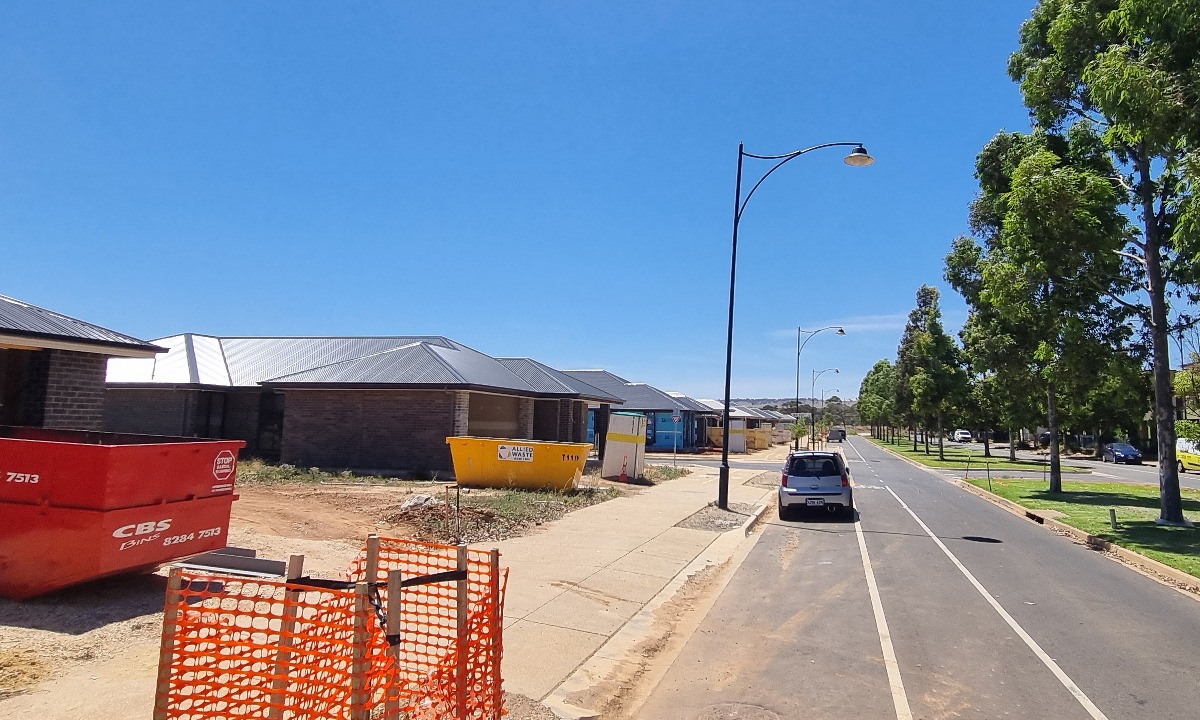
New housing along Newton’s Boulevard, Munno Para. Photo: Thomas Kelsall/InDaily
But northern suburbs councils have been urging the state government to invest more in public transport due to concerns about local road congestion and poorly sequenced housing developments.
The Adelaide Plains Council, for example, told the government last year that housing and employment growth in its area would soon outstrip what councils and developers could support.
“Historically, there has been lack of State Government funding of services within Adelaide Plains and Two Wells other than roads, e.g., no public health services, no public transport (bus or rail), and limited education facilities,” the council said in its submission to the government’s Greater Adelaide Regional Plan discussion paper.
“There is limited community transport across Adelaide Plains.
“If residential and employment growth is proposed at Two Wells… then demand for services (physical and social) and infrastructure upgrades will increase exponentially and Council and development sector will not be able to fully fund.”
The City of Playford also complained to the government last year that “excluding Riverlea, no consideration has been made for public transport” and this is creating “car-dependent communities”.
“Due to the residential growth occurring at Riverlea, Virginia, Angle Vale and Two Wells… and future growth earmarked for Dry Creek in the City of Salisbury… there is a need to identify a suitable future rapid mass transit corridor that is separate to the road network,” Playford council said.
“Without this, future traffic congestion issues will impact people’s quality of life who live and work in the region as well as detrimentally impacting the environment through car emissions.”
A state government fact sheet prepared for its new transport study outlines that car ownership is slightly higher – and public transport usage lower – in the northern suburbs compared to the rest of Adelaide
Only 5.7 per cent of commuters in Adelaide’s north catch public transport to work, compared to the Greater Adelaide average of 6.4 per cent.
Further, 93 per cent of residents in the northern suburbs own a car – higher than the Greater Adelaide average of 92.4 per cent.
The percentage of northern suburbs commuters who cycle to work is less than one per cent.
A state government spokesperson said the new transport plan will “consider ways to encourage public and active transport use as part of this long-term planning”.
Asked whether Walker Corporation’s Riverlea development and Adelaide’s northwest should be connected by a train line, the spokesperson said: “The State Government is not currently planning for a north-west passenger rail connection but it is something that could be considered as the population increases over time.
“Questions such as these about future investment decisions will be informed by the transport study.
“We want to understand the transport needs and priorities of people living in northern Adelaide, which in turn will inform future spending decisions.”
The northern suburbs are currently serviced by the recently electrified Gawler line, which connects the CBD with Mawson Lakes, Salisbury, Elizabeth, Munno Para and terminates at Gawler.
But an area and population as big as the northern suburbs would in other major cities be serviced by five to six train lines, according to Dr Charlie Hargroves, Sustainable Development Adjunct Fellow at the University of Adelaide’s Business School.
“We’ve got quite a lot of corridors here that are practically automobile dependent,” Hargroves said of the northern suburbs study area.
“We’ve got a train line that runs right through the centre… with quite a number of stations, but they only really service about 10 per cent of the entire area.”
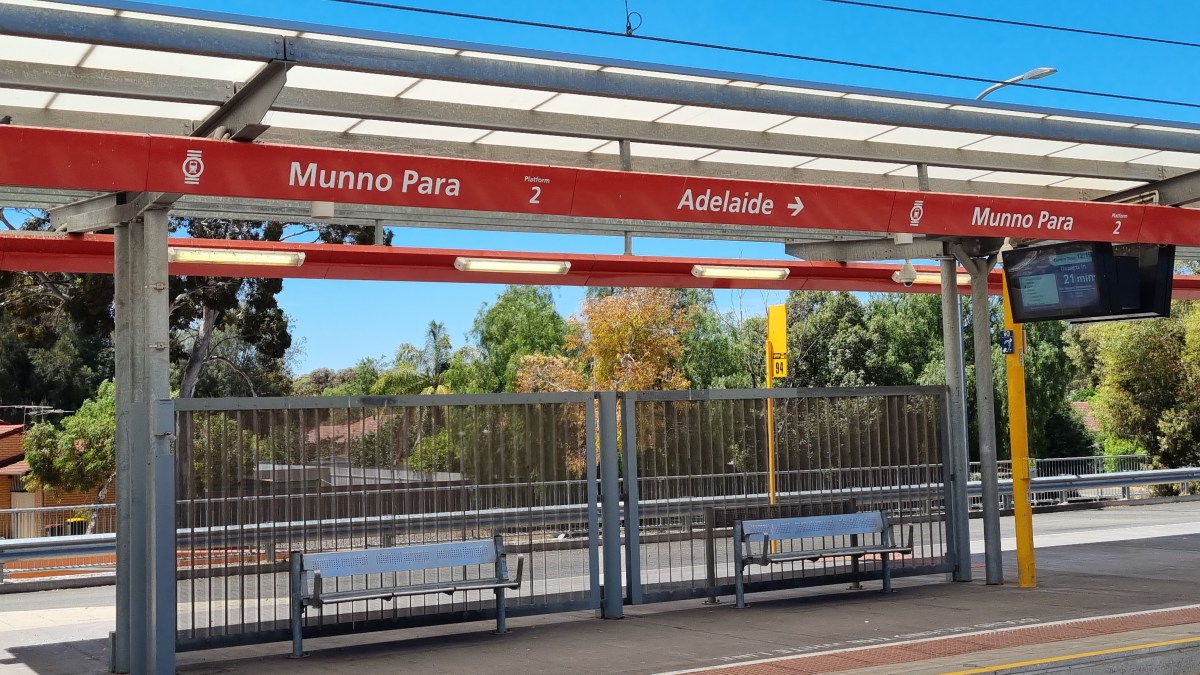
The Munno Para train station along the Gawler line in Adelaide’s northern suburbs. Photo: Thomas Kelsall/InDaily
Hargroves said “cost-effective mid-tier transit” options – such as trackless trams, which don’t require expensive rail infrastructure – should be on the government’s radar.
He also said having around 95 per cent of northern suburbs commuters taking a car to work is a “significant brake on economic development” which “ also makes it difficult to attract people”.
“I think there’s obviously been a pretty heavy focus in the previous funding rounds around roadways and road extensions and particularly linking between some the major corridors to try and reduce a bit of congestion,” he said.
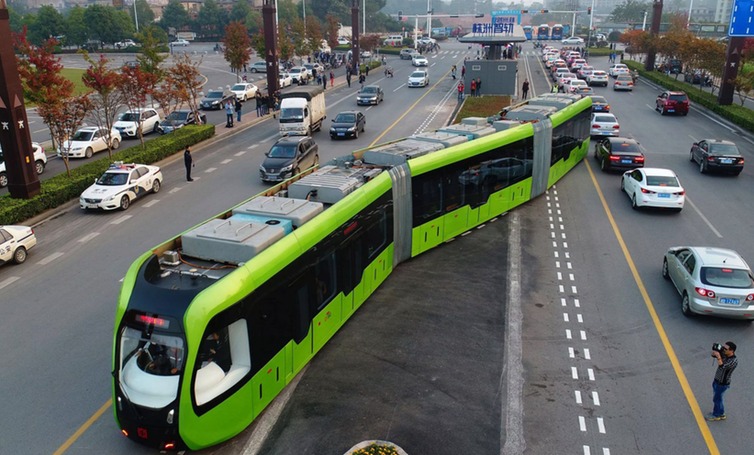
A battery-powered trackless tram operating in Zhuzhou, China. Photo: CRRC Zhuzhou Institute/Author provided
“The focus seems… to be on automobile sort of centric transport solutions, but when you look at the stats and it says 5.6 per cent of people are catching public transport and there’s a massive congestion issue – surely that key focus is going to be the public transport area.”
Consultation on the Adelaide North Transport Plan closes on March 3.




